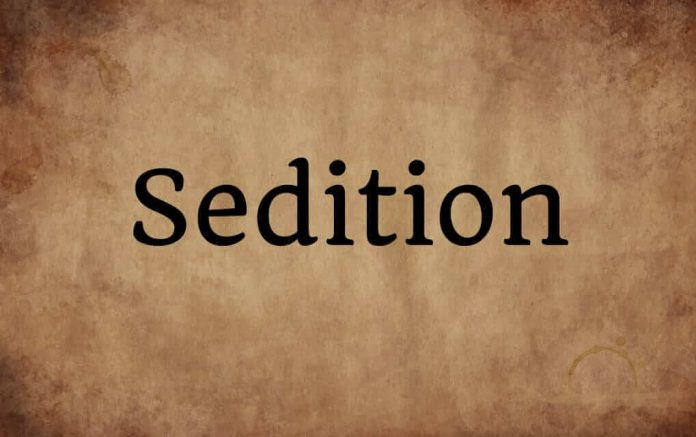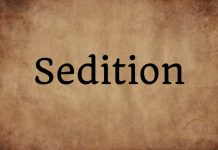This article is written by Dnyaneshwari Patil, from RTMNU Babasaheb Ambedkar College of Law, Nagpur. She discusses how sedition law has been used against journalists to suppress their voices since the colonial era and the problems regarding sedition law.
Table of Contents
Introduction
The law of sedition has always been a controversial topic in India. There have been calls for delimiting the sedition law from the statute, some others advocating for retaining the law but keeping its implementation within defined legal limits to strike a balance between fundamental rights and national security. Recently the debate regarding the sedition law has again reignited due to the recent order passed by the Supreme Court in M/s Aamoda Broadcasting Company Pvt. Ltd. & Anr. v. The State of Andhra Pradesh & Ors. (2021) and the judgement for quashing an FIR in Vinod Dua v. Union of India & Ors. (2020) The Supreme Court has made efforts to re-examine the validity of the colonial-era sedition law in the writ petition filed by journalists Kishorechandra Wangkhemcha and Kanhaiya Lal Shukla, challenging the validity of sedition law as violative of freedom of speech and expression.
The genesis and evolution of the use of Sedition Law against journalism
The sedition law prevailed in India from the colonial era and was used against the Indian freedom fighters to suppress their voices. The Indian Penal Code was created in 1860. Originally the sedition was not in the draft, but it was introduced in the year 1870. Section 124A mentions the offence of sedition and falls under chapter VI of the Code, providing ‘the Offences against the State’. The law was modified multiple times; in 1898, it was again modified through the IPC (Amendment Act), 1898. Since then, it has been the same.
The sedition law had been used multiple times in the past to subdue the voices of the journalists.
Trials of sedition : pre-Independence
Queen-Empress v. Jogendra Chunder Bose & Ors. (1892)
In this case, Jogendra Chunder bose was an editor of Bangobasi, a Bengali magazine, and he was charged with sedition for voicing against the British Government’s policies, ie., the Age of Consent Bill, 1891. The publisher contended that the sedition law only penalised those who write the seditious article and not those who publish them. He also challenged the sedition law and held that it goes against the original intention of the law. The Calcutta High Court held the publisher liable because the magazine’s circulation was done with the intent to be read by the audience. The Court also distinguished between the word ‘disapprobation’ ( legitimate criticism) and ‘disaffection’ (which refers to ‘any feeling contrary to affection’) and concluded that an attempt of disaffection against the government is punishable. Thus the law of sedition does not take away the right of the people.
Queen-Empress v. Bal Gangadhar Tilak & Keshav Mahadev Bal (1897)
In this case, Tilak wrote two articles- ‘Shivaji’s Utterances’. Tilak and C.G. Bhanu, a notable Pune intellectual, spoke on this article at the Shivaji festival. The Bombay government claimed that through the speech, they incited disaffection that led to the killing of two British Officials. The Bombay High Court stated that it is the question of whether these articles can be considered as inciting disaffection against the government and has nothing to do with the case. Thus it merely reduced the interpretation of the legal text to ‘incitement of feelings of “disaffection”’. However, after the perusal of the article, it was observed that it illuminated the political ideology of Tilak as he stood at the radical side of liberalism. The High Court accepted the definition propounded in the Jogendra Chunder Bose about the word “disaffection” and opined that bad feeling against the government is criminal. They also held that it is immaterial whether there were any consequences. The intention of the offender is the primacy for qualifying for the offence of sedition.
Emperor v. Bal Gangadhar Tilak (1917)
In this case, Bal Gangadhar Tilak was again tried for sedition. It was contended that the speech given by Tilak was seditious. The speech was in Marathi, and according to the respondent, the intent of the speech was lost in translation. The advocated speech was peaceful and intended to bring about changes in government policies through lawful means. It was also contended that Tilak was not attacking the government but the civil services, which was distinct from the British government entity. The Bombay High Court rejected this contention and held that the civil services derived its authority from the state itself. However, the HC took a liberal stance regarding the word “disaffection” and held that it does not only refer to ‘absence of affection’ giving a narrower interpretation.
Mrs Annie Besant v. the Advocate General Of Madras (1919)
The case dealt with Section 4(1) of the Indian Press Act, 1910, framed similarly to Section 124A. In this, numerous articles were published in New India, the printing press owned by Annie Beasant, criticising the government’s actions and policies. Taking exceptions to these articles, the Governor-in-Council of Bombay issued an order prohibiting Annie Besant from entering the Province of Bombay along with the order for forfeiture of all copies of New India and the deposit of Annie Besant relating to the printing press. Annie Besant challenged the order; however, the Madras High Court dismissed the petition, and the privy council upheld the same.
Sedition Law in independent India
In 1948, KM Munshi moved an amendment to drop the word “sedition” from the Constitution draft and eventually, it was removed from the Constitution after discussions of the Constituent Assembly. After Independence, in Tara Singh Gopi Chand v. The State (1950), the Punjab High Court recognised that Section 124A undeniably restricts freedom of speech and expression under Article 19 of the Constitution. Thus, it invalidated the Section. However, the Constitution (First Amendment) Act, 1951, reimposed the controversial law. The law was not only reimposed but was strengthened by adding two words, “friendly relations with a foreign state”, “public order”, and incitement to an offence as grounds for imposing “reasonable restrictions” on freedom of speech. Initially, the Constitution only contained the State’s security, defamation, contempt of courts, and decency and morality as grounds for restricting speech.
It was during the Indira Gandhi government, the offence of sedition under Section 124A was made a cognisable offence for the first time in India’s history. The new Code of Criminal Procedure, 1973, replacing the old version, sedition can be considered as cognisable offence authorising the police to arrest the suspect without any warrant. Further in the landmark judgement, Kedar Nath Singh (1962), the Supreme Court upheld the validity of Section 124A of IPC. It held that the purpose of the sedition law is to prevent the government established by the law from being subverted. As for the stability of the government, its smooth continuous existence is an essential condition. It also defined the scope of Section 124A and held that to invoke the clause of sedition there needs to be a pernicious tendency to incite violence. Thus, only those words that intend to disturb law and order or incite violence are held as seditious.
Problems with Sedition Law
The law should be utilised when there is a severe threat to the security and sovereignty of the country. However, the law is used to suppress free speech and weaponised as a tool against political rivalry. It is a de-facto strategy for many ruling governments for years, whenever they encountered public criticism and protests. There has been an increase in sedition charges. Since 2010, 10,938 Indians have been accused of sedition in 816 cases reported by “Article 14”, a media and research group. One can witness that sedition charges come out clearly during significant events opposing the action of the government. Such as the street protests against the Kudankulam nuclear power project in the southern state of Tamil Nadu, when the Congress party was in the majority, and during the violent protests against the BJP’s Citizenship Amendment Act. According to the National Crime Records Bureau (NCRB), there has been an increase in sedition cases by 160%. However, the conviction rate dropped to 3.3% in 2019 from 33.3% in 2016. Thus this shows that the state authorities are misusing the sedition law, and they are trying to silence any criticism or dissent against the majority government.
Feigned interpretation of the law
The definition of sedition law is ambiguous. The terms mentioned, such as “bring into hatred or contempt” or “attempt to excite disaffection”, have the potential to be interpreted in many different ways. Thus, it empowers the government authorities to harass innocent citizens who are trying to raise their voices. There is no specific definition, and what activities are regarded as seditious is not defined; thus, it provides a broad outline.
In Superintendent Central Prison v. Dr Ram Manohar Lohia (1960), the appeal was regarding interpreting the word “in the interest of public order” under Article 19 of the Constitution. The Supreme Court held that the aggravated disturbance of public order could be used to restrict freedom of speech and expression instead of mere ‘law and order’, and there should be a proximate connection between the instigation and aggregate disturbance to the public order. However, the Kedar Nath judgement failed to take note of this judgement and, by casting the net too wide, held that the sedition is committed when the actions tending to create public disorder or disturbance of law and order or public peace is complete. Thus the definition of Section 124A is vague and fails to define the criminal offence with definiteness.
The issue was highlighted in M/s Aamoda Broadcasting Company Pvt. Ltd. & Anr. v. The State of Andhra Pradesh & Ors (2021)., where Justice Chandrachud remarked, “Everything cannot be seditious. It is time we define what sedition is and what is not.” Justice Chandrachud tried to restrain the Andhra Pradesh government from taking action against Telugu news channels charged under Section 124 A Of IPC.
Threat to freedom of speech and expression
The law is seen as a compromise to freedom of speech and expression. To put a check on government authorities, its policies and action, constructive and positive criticism is an indispensable tool. However, the sedition law has been used as a tool by the government to regulate citizens’ opinions and indiscriminately wield power. The government is using the sedition law to suppress the protesting views of the public. A petition is filed by the former minister Arun Shourie and NGO Common Cause challenging the validity of Section 124A of IPC,1860 as violative of Articles 14 and 19(1)(a) of the Indian Constitution.
Recent cases of sedition
- In Sanskar Marathe v. The State of Maharashtra (2015), Amit Trivedi is a political cartoonist and social activist. Through his cartoon, it was argued that he defamed the parliament, the Constitution of India and the Ashok Emblem. Therefore an FIR was filed for sedition against him for trying to spread hatred and disrespect against the government by publishing the cartoon on the ‘India against corruption’ website. The Bombay High Court held that the citizens have the right to criticise and comment on the government policies and measures until and unless it does not incite people to violence against the Government established by law or create public disorder.
- Recently, in Vinod Dua v. Union of India & Ors, an FIR was lodged against senior journalist Vinod Dua for sedition, public nuisance, printing defamatory materials and public mischief by the BJP leader in Himachal Pradesh over a youtube video criticising the Prime Minister regarding the government’s response to COVID-19. The Supreme Court quashed the FIR. It was held that “Every Journalist will be entitled to protection in terms of Kedar Nath Singh, as every prosecution under Sections 124A and 505 of the IPC must be in strict conformity with the scope and ambit of said Sections as explained in, and completely in tune with the law laid down in Kedar Nath Singh”. The act intending to create disorder, or disturbance of law and order, or incitement to violence should be limited according to the provision’s application.
Are dissenting journalists safe despite Supreme Court’s judgements
Taking the recent example of Vinod Dua, Vinod is a Delhi based journalist. However, the case was filed in Himachal Pradesh. This is the primary feature of the case. Dua was luckier and had the adequate resources to file a plea at the Supreme Court to quash the case. However, this is not the same for everyone. The journalists from small towns don’t have adequate resources, and countering such a case is itself a punishment. So for the journalists to enforce the judgement in the first place, they have to rush to the court. Journalists who don’t have a large media house backup get caught in this process. Cases filed at, other than their operative area, then the independent journalists find it difficult to fight the case. The judicial process makes it arduous and expensive for journalists. This discourages them from opining their thoughts, eventually hampering the fundamental right of free speech and expression.
Similarly, in Siddique Kappan matter, he is a Kerala based journalist who was on his way to report the Hathras case. He and three other men were arrested, claiming that they were going to Hathras as a part of a conspiracy to create law and order trouble and cause a riot. He was booked under the sedition and unlawful activities prevention act. However, the local court of Mathura rejected the Uttarpradesh government application for further probe in this case and discharged the accused on the technical ground.
- Similarly, in the Disha Ravi case, regarding the Greta Thunberg toolkit, which was tweeted to provide guidelines, suggestions, plans to create a social media storm and plans for staging protests outside Indian embassies. After inquiry, it was seen that the Poetic Justice Foundation, which was involved in creating the toolkit, was associated with the pro-Khalistani organisation. However, all this was to help the farmer’s protest. The tweet regarding the toolkit was removed quickly, but it was met with lots of criticism. The charges of sedition were filed against Disha Ravi. The Court held that Disha Ravi has no connection with the Pro- Khalistan movement and can not be imprisoned solely based on opposing government policies.
- Recently, a Manipur-based political activist, Leichombam Erendro, was arrested for sedition – for writing “cow dung and cow urine don’t work” on Facebook. When the government requested the Supreme Court for adjournment, the Supreme Court ordered the release of the journalist and observed that continued detention amounts to a violation of the right to life and personal liberty. The Supreme Court also questioned, “’Why are we using the sedition law, which was used by the British to arrest freedom fighters. Mahatma Gandhi himself was arrested under the sedition law?”
Conclusion
The sedition law and its growing misuse by the government ( both ruling and opposition party) is a severe concern. The police authorities, the ruling party and different government authorities are misusing the law, and the denial by the trial court to grant bail in the matter is another serious concern regarding the sedition charges. Personal liberties and free speech are some of the essential hallmarks of democracy and the system’s foundation. Expression of criticism should not be considered seditious. Criticism is an indispensable part of democracy that puts the government in check. The laws of sedition should be used cautiously, and it is high time that the judiciary reviews the law. If not abolishing it, one should consider toning it down and limit its ambit.
Reference
- https://thewire.in/law/supreme-court-vinod-dua-verdict-sedition-protection-journalists
- https://www.indiatoday.in/india/story/journalist-bodies-welcome-sc-verdict-on-sedition-case-against-vinod-dua-1811081-2021-06-05
LawSikho has created a telegram group for exchanging legal knowledge, referrals, and various opportunities. You can click on this link and join:
https://t.me/joinchat/J_0YrBa4IBSHdpuTfQO_sA
Follow us on Instagram and subscribe to our YouTube channel for more amazing legal content.
 Serato DJ Crack 2025Serato DJ PRO Crack
Serato DJ Crack 2025Serato DJ PRO Crack










 Allow notifications
Allow notifications



